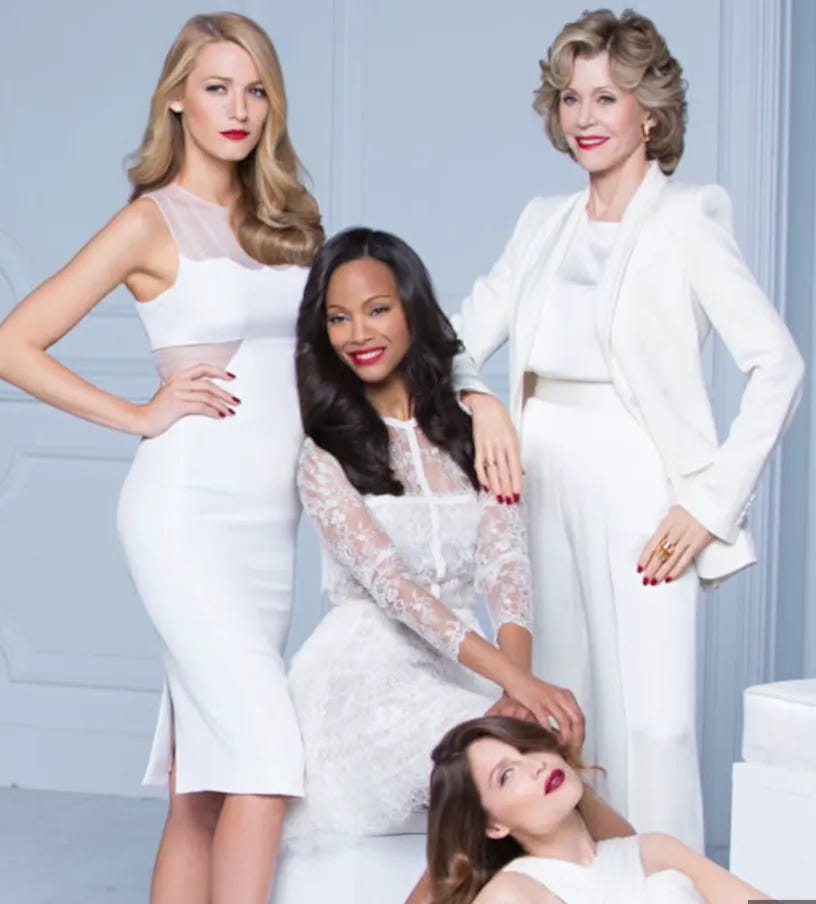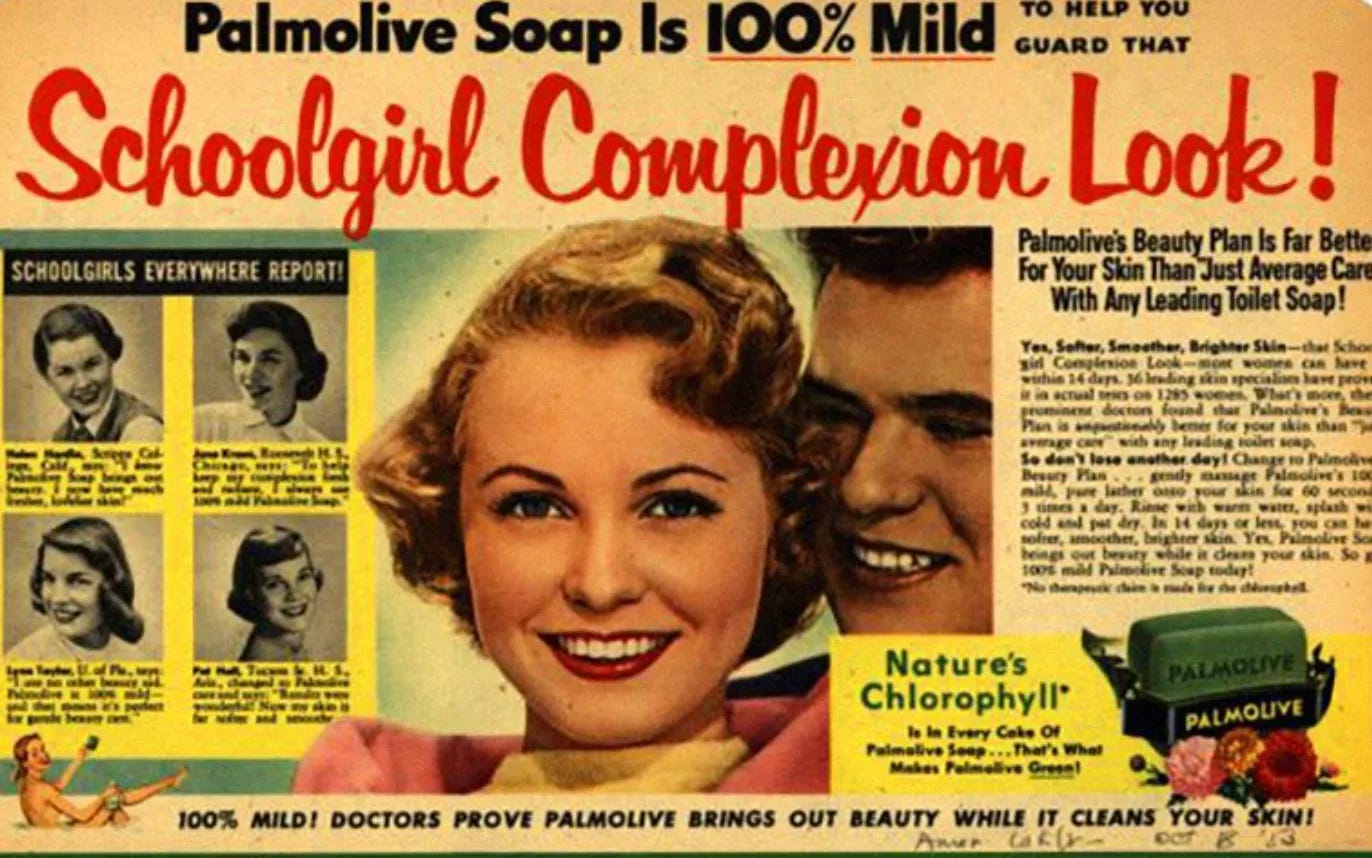The Decline of Dentures and the Redefinition of Female Old Age
What Boomer women enjoying their Third Life tells us about Modern Ageing…..
If you’re new here, welcome to #MajorRelate, a growing community of 7,500+ readers across Substack and LinkedIn. We decode generational shifts, modern life, and the future of work with sharp insight and cultural commentary.
For more, visit my website for my offerings for businesses, or follow along on Instagram.
I originally posted a version of this newsletter in March 2023. But it still rings true today. Enjoy.
The Decline of Dentures and the Redefinition of Female Old Age
What Boomer women enjoying their Third Life tells us about Modern Ageing…
Most major changes happen gradually and quietly, with few people noticing the shift until it’s obvious. Things that were once commonplace and normal one day suddenly seem completely alien and odd. This rule applies to everything from smoking in public places to carrying cash, and I suspect, the often unremarked upon decline of dentures. For a certain generation, the cup of sterilised water with dentures was a common sight on couples’ bedside tables. Long before better dental health and access to dentistry, it was once the fashion to remove all teeth at an early age so as to prevent expensive dental bills later in life.
Today, the skill of making dentures is in decline and the percentage of those with some natural teeth has increased from 20% to 80% since the 1980s. A good news story perhaps?
But this is just one way that grandparents are ageing at a much slower pace in the 21st century than their parents did in the 20th century. My mother is 79; she shops in Zara, gets her hair done regularly and in 2023, aged 77, completed a US road trip through 20 states. As if to ram home the point, my grandmother died when she was the same age.
At the extreme end of this trend, there is of course, the rise of Instagrans and now TikTok stars such as 88-year-old Patty Davenport, who started doing skits with her grandson in lockdown and today has nearly a million followers. But these are always the anomalies rather than the norm.
In truth, the reimagining of old age has been spearheaded by the circumstances of the average Baby Boomer woman, not by seeing celebrities such as Joan Fonda’s campaigns for L’Oreal or Carla Bruni on the catwalk. If anything, brands' use of older models always feels a bit clumsy, like an afterthought.
We probably don’t need reminding of the chronic age-disconnect in the fashion world; the average catwalk model is somewhere between 16-21, while the average Vogue reader is between 35-54 and with over-55s making up 22% of their readership. But there’s also nothing new here; ageism in fashion was most apparent in the 1960s when Vogue decided to discontinue its fashion cuts for older women and entirely cater to the new generation of Baby Boomers who were then upending the culture and beauty world. Is it any wonder that this generation that invented youth culture has never embraced getting old?
Baby Boomers supercharged the consumer revolution when they were babies, teenagers, mid-lifers and are doing so now that they are in their seventies. The Baby Boomer woman buys on average two pieces of clothing a month, in contrast to their grandmothers, who bought clothing just twice a year. Gen Z did not invent fast fashion - it was Boomers who were the first generation for whom disposable garments were normalised and made possible with cheaper production and synthetic fabrics - Gen Z just sped it up.
Baby Boomers have initiated a revolution in the beauty industry too. Market penetration of face creams and lotions is highest amongst 65-plus women, but should also come as no surprise; this was the generation for whom the teenage spot cream market had been invented.
And so with hair. Back in the 1960s, it was women aged between 16-54 who attended the hairdresser the most, but by 2011 this pattern had reversed, with the most frequent attendees to the hairdresser, the ‘shampoo and set’ cohort of over 75s. Today, it is still older women who go to the hairdressers most often. Unlike Millennials, they do not need the cloak of wellness as a justification; instead, the doctrine of ‘being well turned out’ has always remained a Boomer sacrament.
In her 1999 book, Figuring Age, Kathleen Woodward noted that the ‘female ageing body becomes, both invisible in that it is no longer seen and hyper-visible in that it is all that is seen’. But Baby Boomer women, having internalised years of ‘staying young’ and ‘anti-ageing’ mantras, are experiencing a different development in their seventies. An invisibility prevails, but it is one that has long given up on the male gaze and is now about keeping the self relevant, present and feeling alive.
But this is also to believe the self-empowering marketing hype. There is a more important factor here. Yes, they have been groomed to think this way since they were young women but it is the fact that they have more disposable income than other generations which is enabling them to keep spending this way in old age (even when most brands ignore them). Any recognition of age diversity and the older woman is, in part, a result of a cold economic calculation: these women have all the money right now.
Age diversity is about challenging prescribed behaviours associated with certain ages (which, because of our biology and sexist culture, tends to plague women more than men). But if we accept this challenge, we also need to accept that female financial empowerment has both liberated Baby Boomers to age differently from their mothers but also entrapped them in a consumerist definition of what good ageing looks like. For Gen X and Millennial women, the future looks very different. Less about face creams and blow dries, I suspect, and more about continuing to work into their seventies (probably sold to them as the only way to narrow the gender pay gap). For in an ageing society, most economies need active, older working women who can also care for the elderly. Defying stereotypes is, after all, an economically driven game.
Thanks for reading,
Eliza






As always Eliza, right on the money. I'm a baby boomer, now single, no time for that story, and I have a lifestyle my mother could never have dreamt of. I play tennis regularly, go on riding adventures all over the world, look after my grandkids regularly. I ache all over! I'm 67 and loving life more than ever before because we have left FOMO behind and embrace being us.